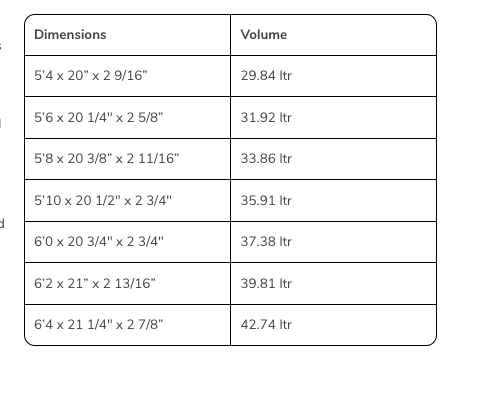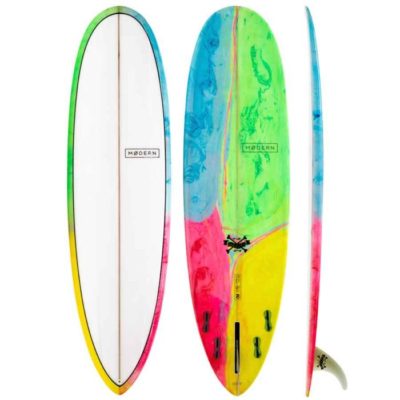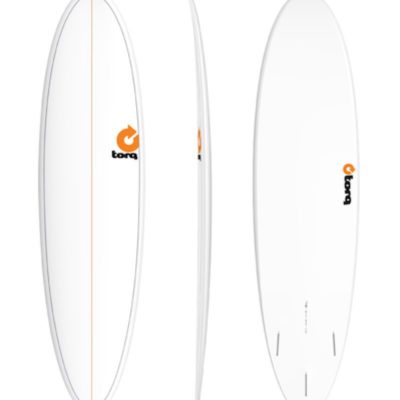Description
The Wrecking Ball design comes from an experimental shortboard design Ben Aipa worked on in 1977. A full nose and broad outline in the front half of the board meet an unmistakable Aipa wing near the back third of the board, where the outline curves in a tight radius until it hits a multipronged experimental tail. Ben’s futuristic outline packs a ton of board into a short package. The resulting increase in volume gives The Wrecking Ball extra float for faster paddling and a feeling of “unsinkableness” even the meanest of flat spots can’t sink.
Updated with high-performance bottom contours by Ben’s son Duke the wrecking ball features a transitional bottom that fades from a rolled nose to a single concave in the middle of the board to a double concave under the fins and finishes with a vee out the tail. To make the most of the Wrecking Ball’s down-the-line drive and allow riders to harness control of the extra speed this board generates, we’ve opted for a quad fin setup.
The result is a high-performance super groveler that blends classic design, experimental innovation, and modern sensibilities into a surfboard that drives down the line with unparalleled speed and bashes through sections without remorse. Feel the power of The Wrecking Ball!
Construction – Fusion HD
Surftech’s version of a standard EPS and epoxy surfboard construction. A closed-cell EPS core containing a wood stringer is layered with E-glass and biax glass for a lightweight performance board with a lively feel. All Fusion HD boards are hand-finished.
- FUSED CELL EPS CORE // Closed-cell EPS core provides more response + flotation
- CLEAR HD-EPOXY RESIN // Epoxy resin system with high thermo-mechanical performances
- HIGH-QUALITY E-GLASS FIBERGLASS // E-glass has the highest strength-to-weight ratio available
- FULL BIAX DECK PATCH (45° / -45°) // The Biax fiberglass distributes power + protects from dings
- WOOD STRINGER // Distributes power + adds pop + adds break strength
- FCS II FIN BOXES // Takes just seconds to insert and remove the fins
- HAND-FINISHED // Machine-shaped, hand-laminated and hand-finished
Fins Included: None
A Legacy of Aloha
Ben Aipa has made a most significant mark in the world of surfing: making the board that fellow Hawaiian Fred Hemmings used to win the World Championship in 1968 and founded his own brand Aipa Surfboards in 1970. Ben invented the doubled-edged swallowtail design in 1972 and followed this with the split-tail design in 1974. Moreover, Ben has served as an informal coach and trainer to such top surfers as Michael Ho, Larry Bertleman, Mark Liddell, Sunny Garcia, Brad Gerlach, and Kalani Robb.
Ben Aipa continued to enter and compete in various surfing contests: He won the Grandmasters division of the 1989 United States Surfing Championship and the Legends division of the 2000 U.S. Championships. Inducted into the Surfing Hall of Fame in 1992, Ben was named one of the Top Ten Shapers of All-Time by Surfing magazine in 2004. Now spearheaded by sons Duke and Akila, Ben’s legacy continues with fresh shapes and ideas from the minds of his talented children.
“I was never watching what other board builders were doing…I was watching the surfers and the natural world around me. Their movements showed me what was missing…I was always looking for the next wave, the next move.” – Ben Aipa




